Location: Ice Station Belgica Lots going on at Ice Station Belgica, here’s a quick summary of the major activities the past two days:
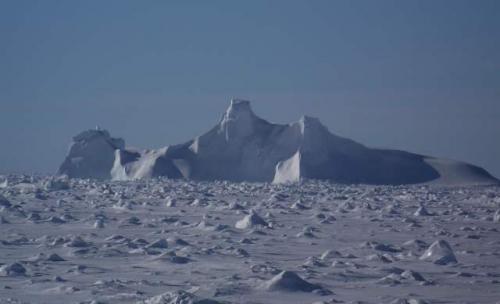
Friday 10/5 Continuous CTD casts – the ship was repositioned in the afternoon to run continuous CTD casts throughout the afternoon, evening, and late night hours. Sharon and Katie stayed up all night monitoring the casts.
Belgian group – sample processing in the lab today. This group is doing work at 2 clean sites (called Brussels and Liege) on the ice floe. They work at Brussels one day, process samples in the lab the next, work at Liege the following day, and then process samples for the next two days. They hope to repeat this 5 day cycle 5 times while we are at the ice station. They are interested in how the ice changes over time during the spring melt cycle. Different members of the group are studying different properties of the ice – things like carbon dioxide, chlorophyll, and iron content; salinity of the water, ice, and slush; and the presence of a compound called DMS, which acts as an "anti greenhouse” compound.
**Saturday 10/6 ** Belgian group - resampling at Brussels site.
Geophysics group – snow depth and ice thickness measurements at site #1. On 10/1 we marked off 2 300 meter transect lines close to the ship to study. We measured the snow depth at each meter along the line and also surveyed the line to determine the elevation of the surface above sea level. Ice thickness was also measured along the line. On 10/3 we repeated a similar process at a second site on the floe. Today we came back to our first site and remeasured the snow and ice thickness. Like the Belgian group, we are interested in how the ice changes over time, but we are looking at the physical properties of the ice instead of the biology and chemistry of the system.
As part of the geophysics work, Mike has been busy digging snow pits. Mike digs a pit through the snow down to the ice surface. He measures various physical properties of the layers of snow and slush he finds and takes samples and determines the type of snow he finds at the different depths.
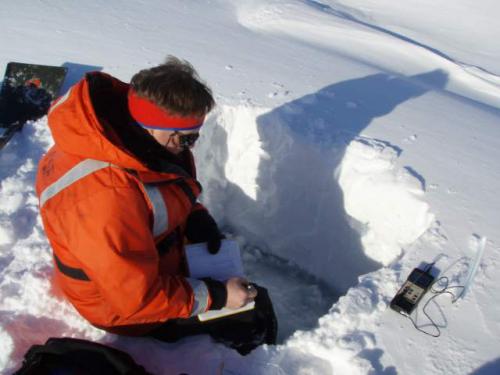 Mike records properties of the snow after digging a snow pit.
Mike records properties of the snow after digging a snow pit.
One of the interesting things I’ve noted here is that you can actually see the shapes of the snowflakes that fall. The snow is so dry that the flakes retain their unique shapes as they fall and you are so cold that when they land on you, they don’t melt instantly! Any snow that falls at home is usually the very wet and sticky variety, so it’s fun to really see the shapes of the snowflakes here.
Something interesting we’ve seen here is a "sun dog” – which looks like a rainbow, but it’s caused by refraction of light from the sun through ice crystals instead of water droplets as in a rainbow. The sun dog forms a halo around the sun and sometimes can be seen on both sides of it.
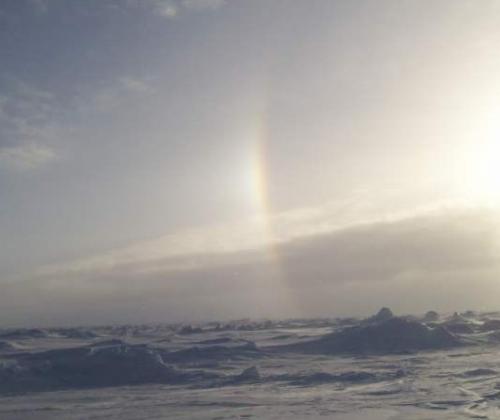 The Antarctic version of a rainbow, a sun dog.
The Antarctic version of a rainbow, a sun dog.
Chris has been busy taking cores and slush samples to analyze the amount and type of algae he finds. He’s also helping with the geophysics work and is taking pictures under the ice to help characterize the entire ecosystem. He took the following pictures with an underwater camera extended on a "unipod” (a one-legged tripod) through a hole in the ice.
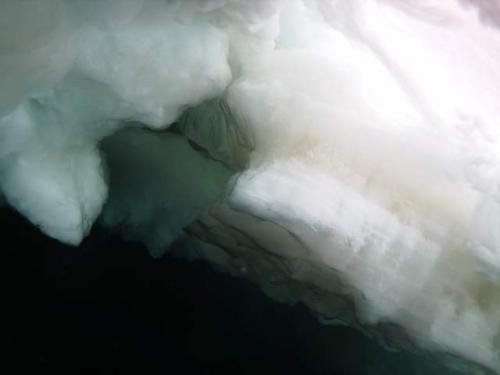
Chris’ under the ice pictures at one of our in-transit stations (above) and at the ice station (below).
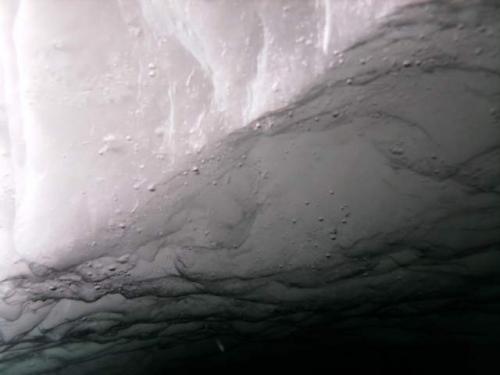
Marine mammals and sea birds spotted by Brent: Minke whale Crabeater seal Snow petrel Antarctic petrel Emperor penguin
Two more busy days at the ice station, and data is coming in at a rapid rate. No doubt the scientists will spend weeks and months after the cruise analyzing all the data collected on this trip.
That’s it for now…signing off for today from Ice Station Belgica!

